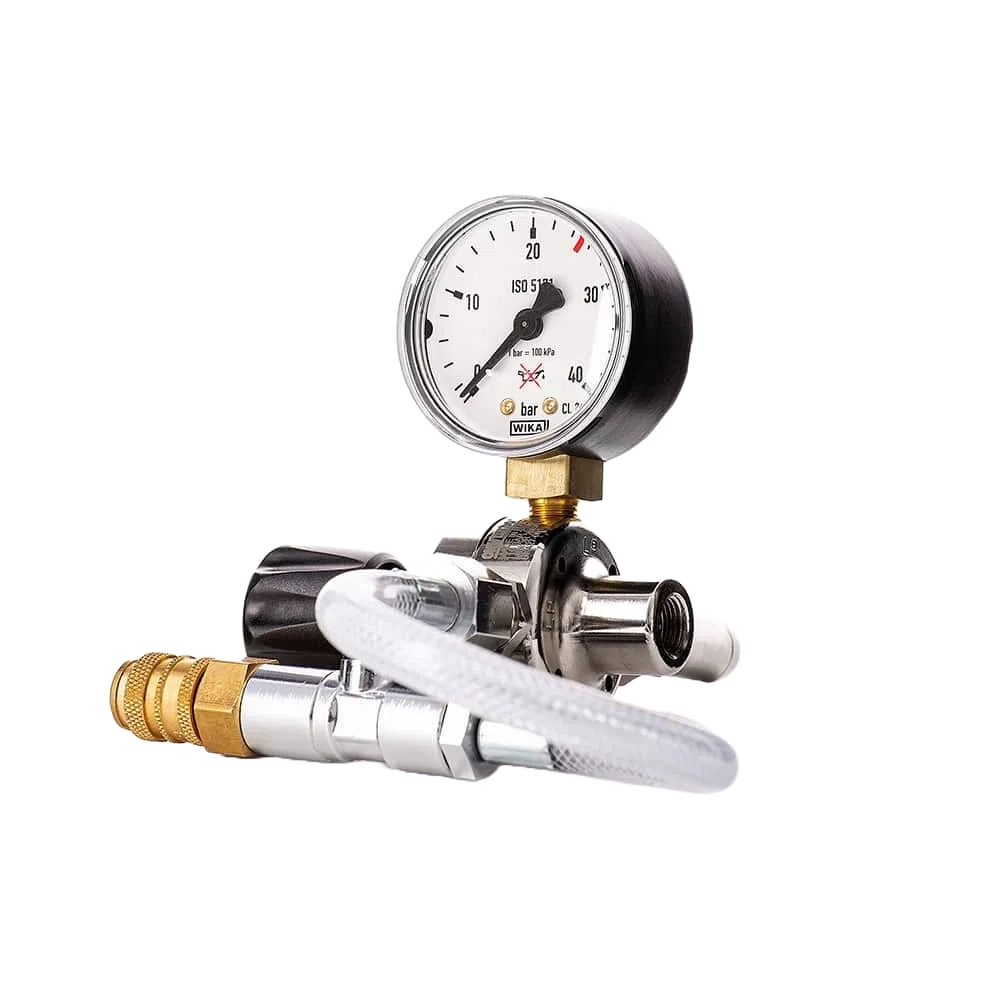How to Properly Use a Nitrous Oxide Pressure Regulator
MagicWhip Featured Articles
If you step into any busy cafe during its peak hours, you’ll notice a rhythm. A steam wands hissing, grinders buzzing and plates sliding out in its perfect timing. In the middle of all this, the smallest irregularity can throw things off. If you’ve ever had a whipped cream dispenser misfired in the middle of service, you know what we’re talking about here.
This is the reason many professional kitchens rely completely on a nitrous oxide pressure regulator. It never has got the spotlight like your espresso machine or your oven, but it has quietly done its job: controlling the flow of gas from the cylinder into your dispenser and that small but of control translates to smoother service, consistent results and a safer kitchen.
Let’s break down what it is, why it matters, and how to use one properly.
What Exactly Is a Nitrous Oxide Pressure Regulator?

A nitrous oxide regulator, it’s also called N₂O regulator – it’s a device that’s attached to the nitrous oxide cylinder. Its main role is to control the flow of gas out of the tank to the dispenser.
Without the regulator, gas would rush out of full cylinder pressure that is not just unsafe but, it also creates an inconsistent and wasteful cream. With a proper regulator attached, you decide how much pressure to use, meaning you get the same result every single time.
Think of it as the difference between pouring wine straight from a bottle versus using a measured pour spout. One’s unpredictable, the other gives you control.
Why Every Professional Kitchen Needs One
If you’re using an 8g charger already, you might be wondering what a nitrous oxide pressure regulator could do differently. But the truth is, yes for home kitchens there is no need for a regulator but, if you’re operating at volume, then they’re limiting.
Here is the reason why regulator with large cylinder make sense of cafes and restaurants:
- Repeat Consistency . Every time the cream or foam comes out with consistent texture. No flat cream during one and still on another, just the same texture all the time.
- Time saved when it matters most. Yes, If you’re using a N₂O pressure regulator, the time saved is astronomical, if you’re using a smaller charger you’ll have to swap 10-15 chargers during a morning rush, but instead, with a high capacity cylinder and a pressure regulator, you can focus on your service and don’t have to fiddle with the equipment.
- Safety you can trust. Safety is an important factor to consider when you are working in a fast paced kitchen, a nitrous tank regulator helps you prevent sudden and uncontrolled release of gas and helps in avoiding all unnecessary accidents in the kitchen.
- Cost efficiency. Getting bulk cylinders which last longer helps in reducing wastage, as one side the efficiency in working and on the other side cost saving which adds up to a great deal.
- Room to experiment. A whipped cream pressure regulator helps you branch out into creative techniques with the rapid infusion and form that without worrying about any guesswork you can be more creative.
For many chefs, once they make the switch, they don’t go back.
How to Use a Nitrous Oxide Pressure Regulator
Now let’s discuss the actual process, if you’ve never used a nitrous oxide tank regulator, it might be intimidating. But once you have done it a few times, it becomes second nature.
1. Check Before Use
Start with quality checking your equipment. Look at the regulator, the cylinder, and your dispenser. You’re looking for:
- Cracks in fittings
- broken or missing seals
- deposit around connectors
A quick check can save you from unwanted surprises later.
2. Attach Regulator
- Place the nitrous oxide pressure regulator on the cylinder valve.
- Hand-tighten it properly. Don’t use tools to force it—if it doesn’t fit easily, something’s wrong.
- Make sure the connection feels tight and secure.
3. Set Your Pressure
Every nitrous oxide regulator has an adjustment knob or dial. This is where the voodoo happens.
- Start with a lower pressure setting.
- For whipped cream, you’ll usually only need a modest charge.
- If you’re working with infusions or foams, you might adjust higher—but always step up gradually.
4. Charge the Dispenser
- Connect the hose from the nitrous oxide regulator to your dispenser.
- Open the valve slowly, letting gas flow steadily into the dispenser.
- Close the valve once it’s filled.
That slow, even release is exactly what makes a regulator valuable.
5. Test and Adjust
Dispense a little cream or foam. If it’s runny, adjust the pressure slightly. If it’s too stiff, ease back. Once you’ve found the accurate level, you can repeat it again and again with confidence.
Safety Tips You Shouldn’t Skip
If you’re working with pressurized N₂O gas cylinders in the kitchen, here are some rules to never skip:
- Store upright: Never store the cylinder in a roll around or make it lie flat.
- Keep cool: Keep the gas away from hot objects and machinery like an oven or stove. Neither mix when it’s hot.
- Train your staff: Even if they’re just making drinks, make sure they know how to use a nitrous pressure regulator with its required safety measures.
- Don’t overfill: More pressure doesn’t equal better cream. Overfilling risks leaks, waste, or damage.
- Clean regularly: Always wipe down the fittings and check the seals often. Cream residue can lower the safety and performance.
When everyone on the team knows these basics, you reduce risk and keep service smooth.
Final Thoughts
In this busy schedule, the last thing you need is uncertainty. A nitrous oxide regulator isn’t flashy, but it’s a tool that gives you consistency, safety and control.
- You get the perfect flow of Whipping Cream every time.
- Your team can focus on serving, not troubleshooting.
- Your cost will be in check, as nothing goes to waste.
In short: the next time when you’re prepping for service, remember that the small tools—like your N₂O regulator—are what keep the big picture running smoothly.



